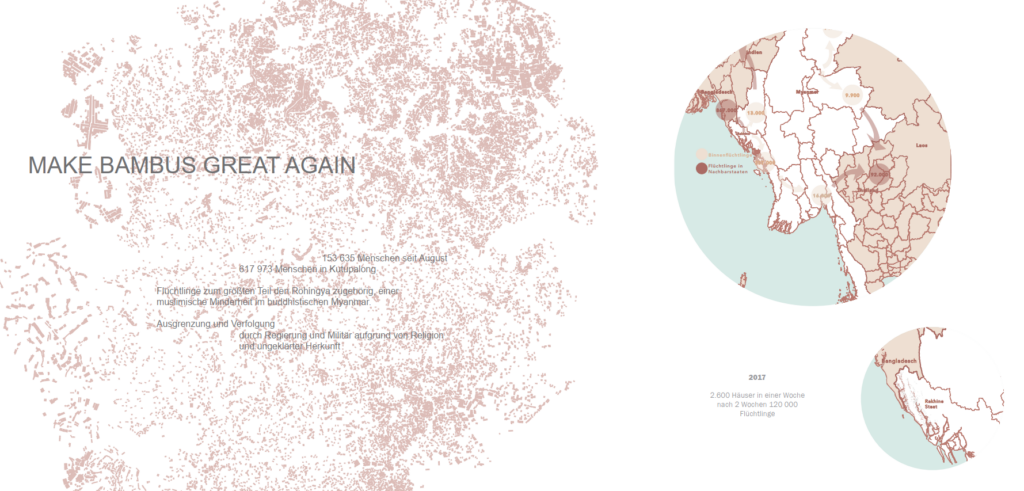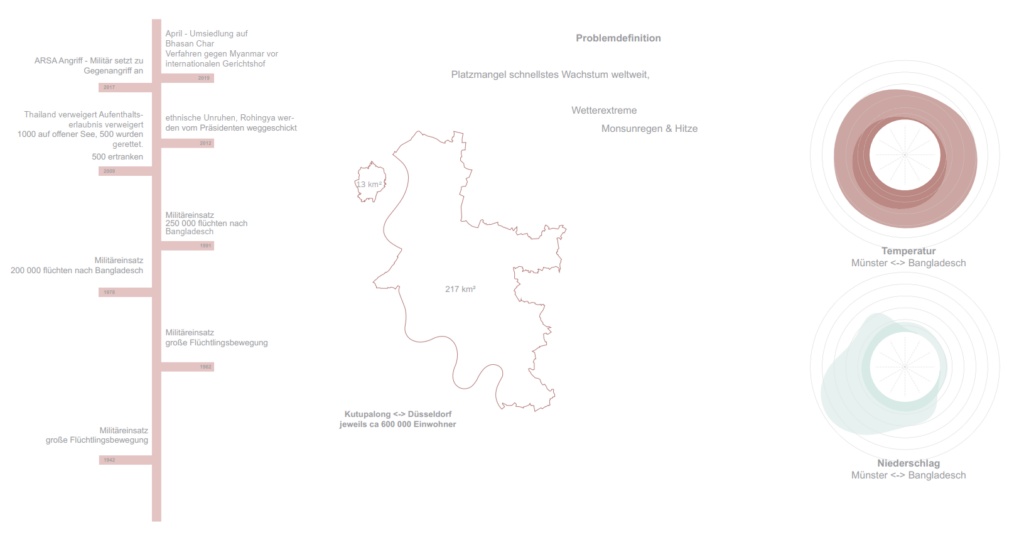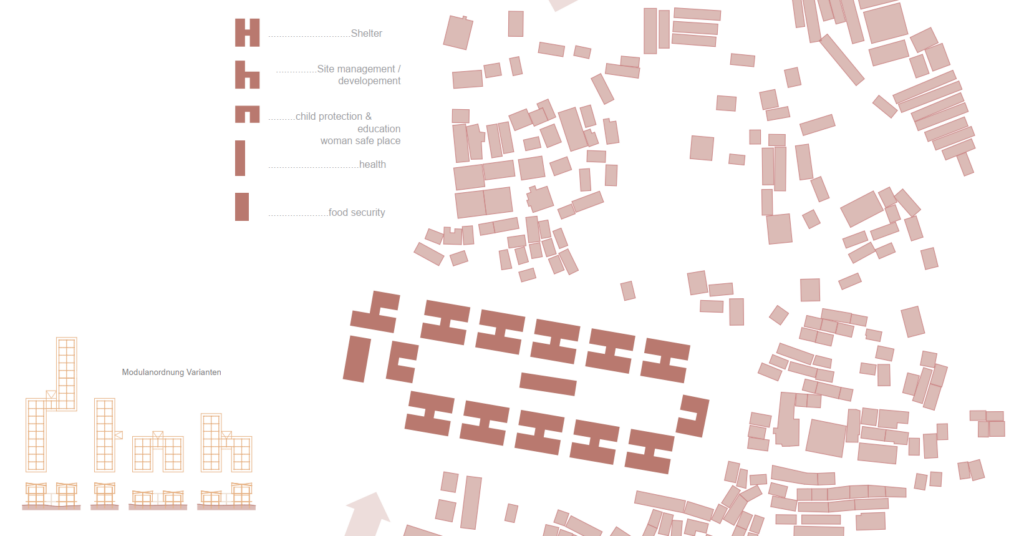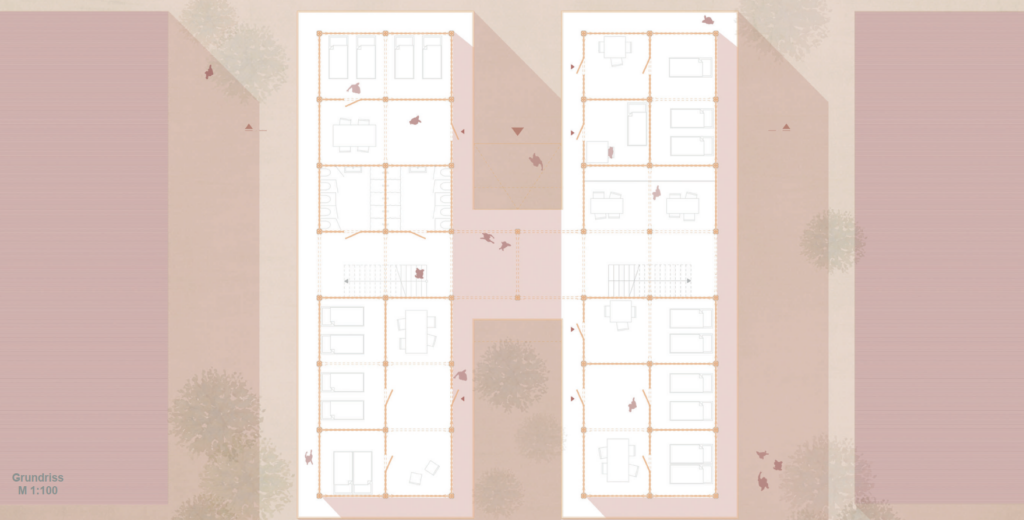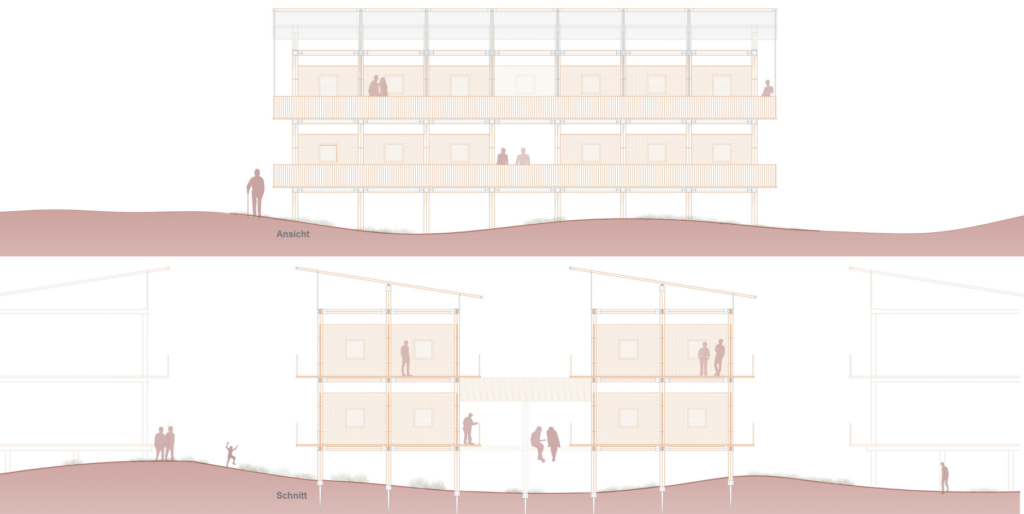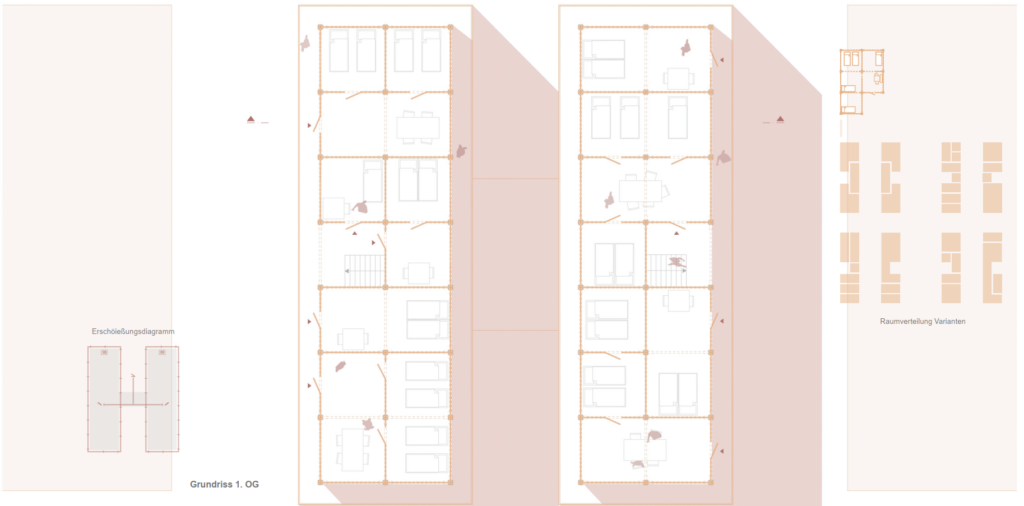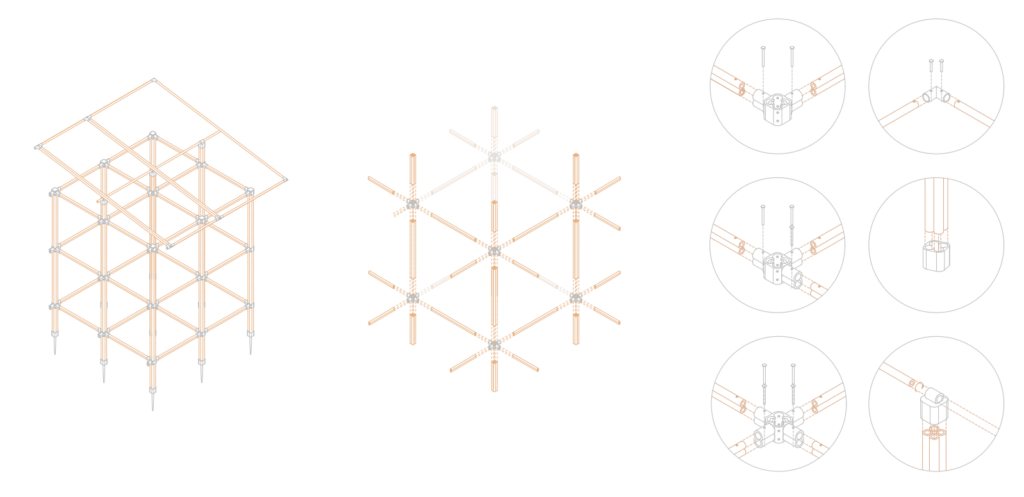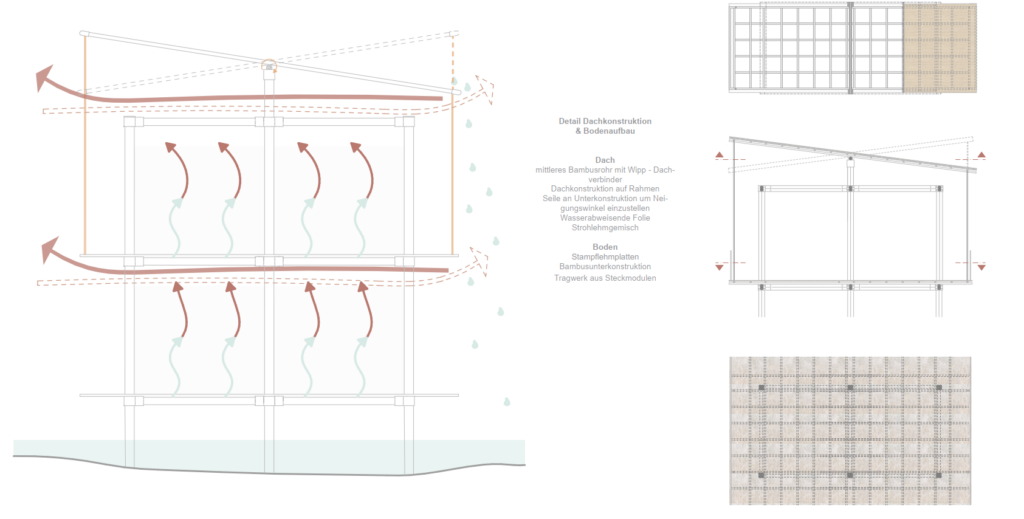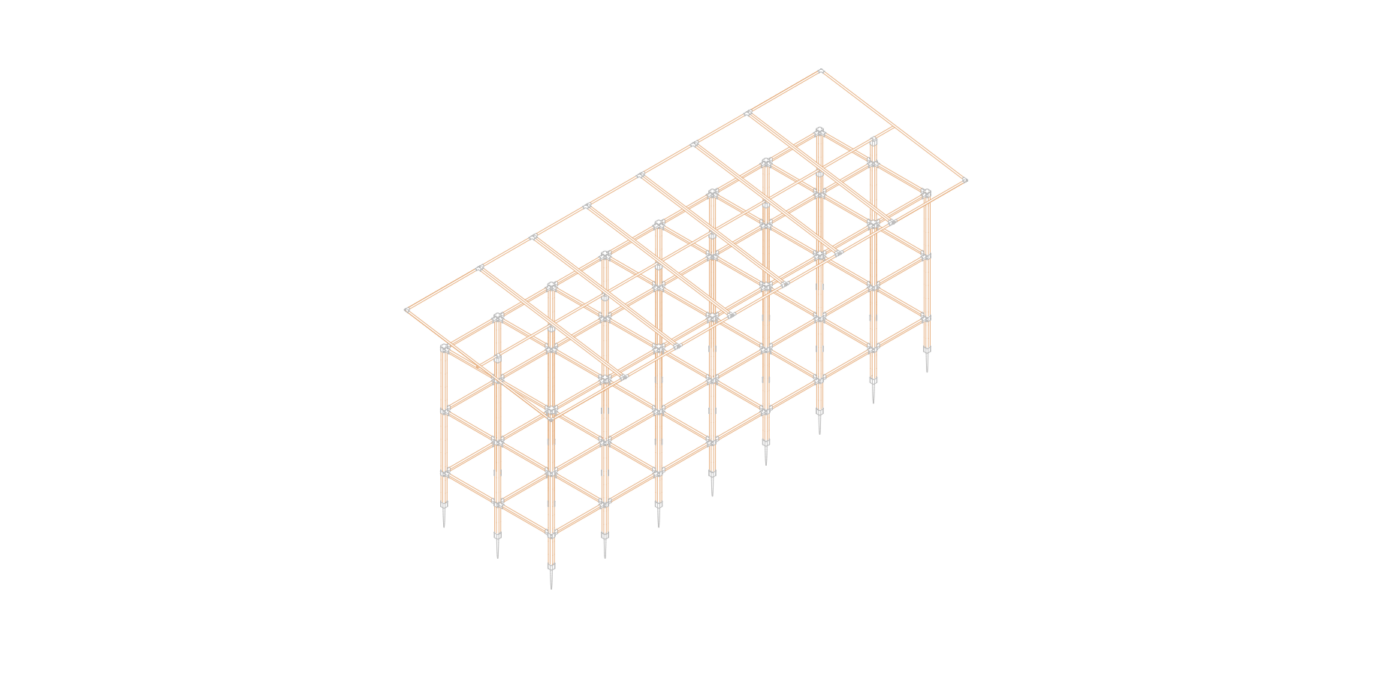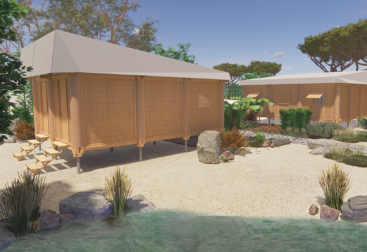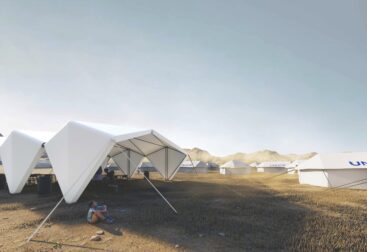Author & Designer: Lena Schenkel, Sarah Killa
Date: November 2021
70 million people around the world are on the run. After traumatic experiences, they lack trust, security and a sense of belonging. What should a place look like where such people can be welcomed? Re-socialize them and integrate them into society?
What are the problems? Where do solutions need to be found?
The largest refugee camp in the world is in Bangladesh, Kutupalong. There, heavy monsoon rains and lack of space form a main problem and put the refugees in turmoil. The majority of refugees in Kutupalong belong to the Rohingya. After years of experiencing discrimination, persecution and violence, they seek refuge and flee as a last resort.
Our mission is to accommodate them in the best possible conditions.
A plug-in system made of local bamboo canes on stilts should provide the solution. Local materials
and quick construction are just a few of the many advantages the design brings. The plug-in system
can be put together by the refugees themselves and built according to their needs. We want to let
them decide how they live.
“Living according to the motto: Be your own architect. Be sustainable. Be innovative.”
The grid is composed of 3 x 3 meter units and is based on the minimum requirement of 9 square meters for living. Depending on the size of the household, families can assemble up to two-story modules. By doing it themselves, they should have a greater sense of belonging and be kept busy to better cope with their traumas.
Modules can be created differently depending on their function. For example, Child Care or Woman Safe Places can be laid out in a U-shape to create a sense of safety.
